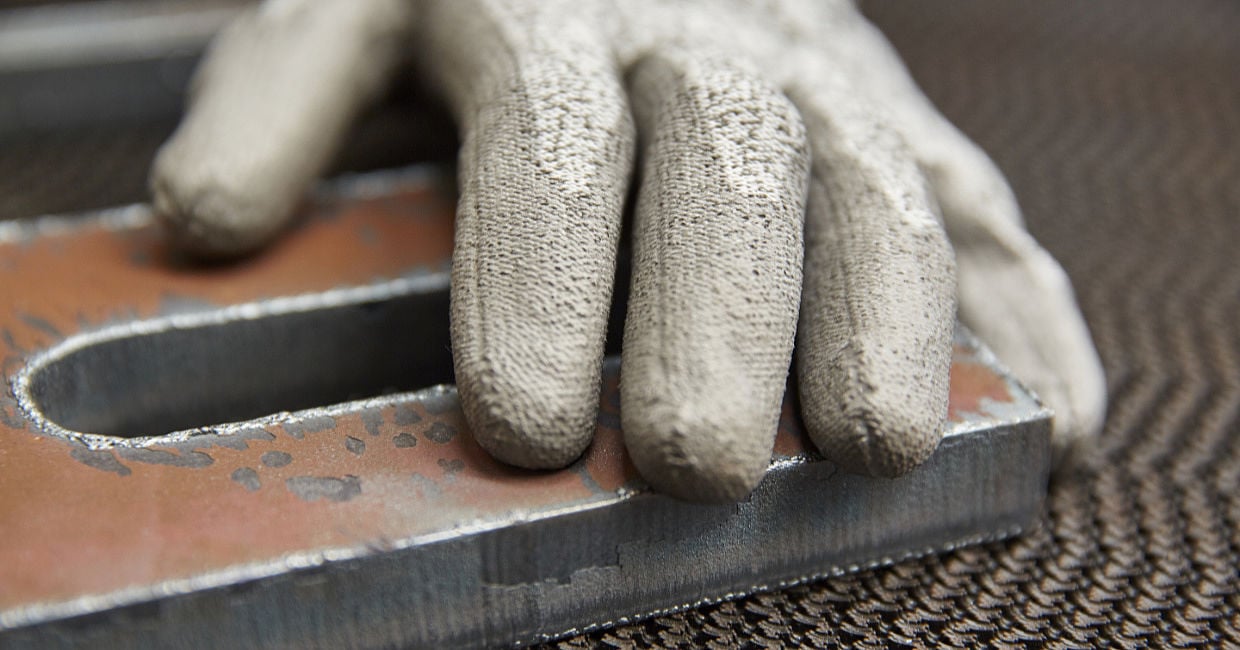These high temperatures leave their mark on the material. The hotter the material, the more pronounced the burr formation will be – three millimeters or more is not uncommon as a burr height. Other factors also play a role in the burr formation. These factors include: material thickness, quality and composition of the material, surface condition and last but not least, the temperature of the material being cut. In addition to these factors, we also have to account for the setup parameters of the cutting machine. The further the operator moves away from the optimal cutting parameters, the more burrs will be formed during the process. Furthermore, during plasma cutting, burr formation can increase if the cutting is too slow. Burrs are also created depending on the part geometry. Large parts that only have external contours can be cut with fewer burrs than smaller parts with many internal cutouts and holes.
To easily remove certain types of burrs
In some cases, depending on the geometry of the burrs, removal can easily be done via chipping. This deformity is then referred to as “slag“. There are some users who take advantage of this by first allowing the flame-cut parts to cool before throwing them onto a pallet or into a container. This approach cannot necessarily be called a reliable process. However, this is also not safe for employees and other people in the vicinity, which is why suitable protective clothing is necessary. Grinding off the burrs by hand is tedious and time-consuming. In addition, this continuous stress caused by the vibration of the hand grinder puts strain on the employees‘ health.
Deburring machines are much better suited for the task of processing materials in a harsh industrial environment. They also process heavy parts that are definitely too heavy for manual handling and processing. A grinding drum has proven to be the optimal tool for removing stubborn burrs from heavy plate. It removes the burrs from plasma or flame-cut parts in a safe and reliable manner and applies force to the edge by flexibly conforming to the part. With a comparatively soft grinding surface, deburring even succeeds on sheet metal parts that have thermal distortion of several millimeters from the cutting process. With a subsequent brush unit, the deburring machine can then not only edge round from the top and bottom, but at the same time also remove the small secondary burr that occurs during grinding.



